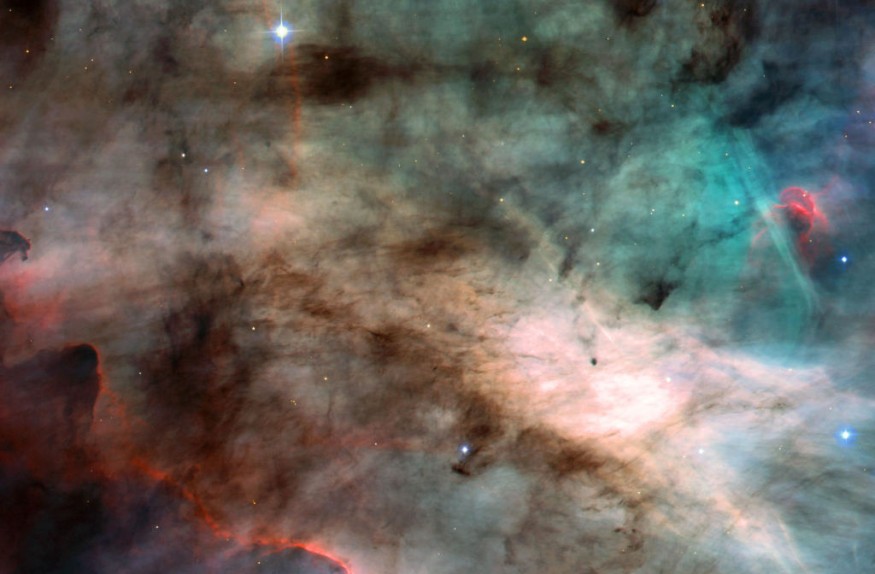A rare isotope of helium gas known as Helium-3 has recently been discovered leaking out of the core of Earth, strengthening the theory stating that the planet has formed in a solar nebula.
A Mail Online report specified that some natural processes could generate helium-3, although it is made mainly in nebulae, with massive spinning clouds of dust and gas, "most traced back to the Big Bang. As a planet grows, it builds up material from its surroundings that causes its construction to reflect its formed environment.
A very small amount of helium-3 has been discovered on the Earth's surface, resulting in some astronomers questioning the theory the Earth formed in a solar nebula.

Helium-3 Leak
Finding an abundance in the core helped researchers from the University of New Mexico add to the evidence for a solar nebula origin for planet Earth.
To achieve higher helium-3 concentrations deep in the core, this planet would have needed to form inside a thriving solar nebula, not on its fringes, nor during its waning stage.
The research team found that approximately 2,000 grams of helium-3 leak out of this planet each year. According to Peter Olsen, the lead study author, and a geophysicist at the University of New Mexico, "this is about enough to fill a balloon, the size of a desk."
He added it is a wonder of nature, not to mention a hint for the history of the Earth that there is still a substantial amount of this isotope in the interior of the Earth.
How the Earth Was Formed
Researchers of the study published in the Geochemistry Geophysics Geosystems journal modeled helium during two-key stages of the history of Earth, to understand its abundance, origin, and formation.
Primordial Helium-3 Exchange Between Earth's Core and Mantle by Peter L. Olson, Zachary D. Sharphttps://t.co/3L9yB2Y8qq@theAGU pic.twitter.com/S6pBRHHAKS
— Lucas Samuel (@LucasSa54749430) March 29, 2022
According to a similar ExpressDigest report, the first stage was during the early formation of over 4.53 billion years ago, when the planet was building up helium from surrounding dust and gas. Then, the next, which is second, was following the moon's formation, roughly four billion years ago, after which helium was lost.
Evidence suggested an object one-third of the Earth's size hit the planet early in its history, and that effect would have remelted the crust of Earth, allowing much of the helium to leak. The gas continues to escape until this day.
A 'Smoking Gun' for the Core of Earth
Applying the modern helium-3 leak rate and models of helium isotope behavior, the study investigators could approximate how much helium-3 was in the core.
They estimated there are ten teragrams to a petagram of helium-3 in the core, a huge quantity, Olsen said. He explained that this points to the formation of Earth inside the solar nebula, where high gas concentrations would have allowed it to accumulate deep in the planet.
Nonetheless, future work searching for other nebula-created gases like hydrogen, leaking at the same rates and locations as helium-3, could be a "smoking gun" for the core as these rare isotopes' source.
There are several other mysteries than certainties, the researchers said. It is believed that the isotope could offer safer nuclear energy in a fusion reaction, as it is not radioactive, although it holds the potential for high output of energy.
Powering Nuclear Fusion Reactors
Whereas it has not been found in abundance on the Earth's surface, and getting to the core is not workable, it has been detected on the moon. Harrison Schmidt, a NASA Apollo-era geologist, was a strong supporter of Helium-3 mine creation on the moon, to recover fuel that could power nuclear fusion reactors on this planet or future spaceship that travels through the solar system.
Arguments have been created for mining Helium-3 from Jupiter, where it is much more abundant; it would need to be provided with the distances involved. Extracting the molecule from planet Jupiter would be a less power-hungry process.
A report about the Helium-3 leaking from the Earth's core is shown on Science and Tech News's YouTube video below:
Check out more news and information on Space on Science Times.












